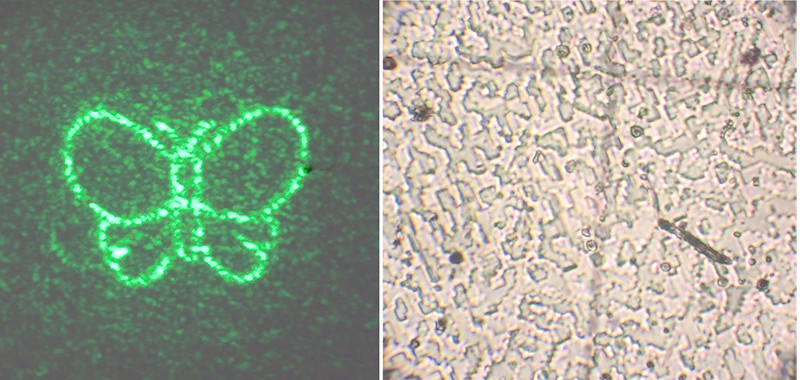- Joined
- Jun 21, 2012
- Messages
- 2
- Points
- 0
Is someone know exactly how the shapes are made for the lasers toys ?
On the right you can see what the transparent tip look like trough a microscope. There is no visible pattern of the butterfly. I can only see squared patterns.
My guess is that its works with constructive and destructive interference of the light, like with a diffracting gating. It should be very complicated to calculate !

On the right you can see what the transparent tip look like trough a microscope. There is no visible pattern of the butterfly. I can only see squared patterns.
My guess is that its works with constructive and destructive interference of the light, like with a diffracting gating. It should be very complicated to calculate !




